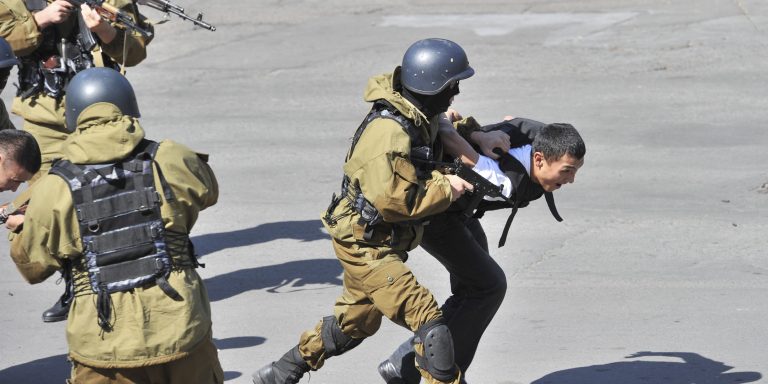INTELBRIEF
April 18, 2018
IntelBrief: Islamist Extremism in Central Asia

- Central Asian extremists represent an increasingly serious global terrorism threat, far afield from their home countries.
- Islamist extremism in Central Asia is fueled by the region’s authoritarian leadership, corruption, and relative lack of economic opportunity.
- Central Asian governments use the threat of Islamist terrorism to justify maintaining a monopoly of political power and to suppress opponents and critics.
- While Islamist extremists are gaining strength in several Central Asian countries, they do not yet pose a significant threat to topple any regimes.
.
Global jihadist organizations such as the so-called Islamic State have found significant numbers of adherents in the five Central Asian states – Kazakhstan, Kyrgyzstan, Tajikistan, Uzbekistan, and Turkmenistan. An estimated 4,000 Central Asian nationals have traveled abroad to fight in Iraq and Syria on behalf of the Islamic State, of which recruits from Tajikistan were the most numerous. Illustrative of how extensive the Islamic State’s reach into Central Asia might run, one Tajik Islamic State fighter, killed in battle in Mosul in 2015, was a U.S.-trained commander of Tajikistan’s special forces.
In recent years, Central Asian Islamic State adherents and home-based radical Islamists have committed increasingly brazen attacks in their countries of origin as well as abroad. Since 2016, Central Asian Islamist terrorists have been responsible for an attack on the metro in St. Petersburg, Russia; a truck attack in Stockholm; and bombings and attacks on Ataturk Airport and a nightclub in Istanbul. An Uzbek national, Sayfullah Saipov, killed eight people in Manhattan with a car in late October 2017.
An unprecedented Islamist militant attack on the commercial area and a military base in Aktobe, Kazakhstan in 2016, and raids by Kyrgyz authorities since 2015 against Islamic State cells in the capital, Bishkek, and the city of Osh, indicate that Islamist cells might be taking root in some Central Asian countries. The Al Qaeda-affiliated Islamic Movement of Uzbekistan (IMU) conducted a major attack on the government center in Tashkent in 1999, although it subsequently was pushed out by the regime of then-President Islam Karimov to Afghanistan, where it remains active on the battlefield. Since 2014, some factions of the IMU have expressed support for the Islamic State and have fought in Iraq and Syria.
The expanding activities and growing strength of Central Asian militants demonstrate the limited effect, to date, of Central Asian government policies and counter-terrorism cooperation with the United States, the European countries, and NATO. With the possible exception of Kyrgyzstan, the Central Asian countries are ruled by dictators who rose through the ranks of the Soviet-created bureaucracy, and whose regimes are universally accused of widespread cronyism and corruption. All have sought to repress domestic Islamist movements rather than try to integrate them into an expanded political process.
All of the Central Asian states have used the perceived threat from radical Islamists to develop large security with broad powers, rather than to undertake economic, social, and political reforms that might satisfy public demands. The one country that incorporated an Islamist party into government in the post-Soviet period was Tajikistan, but in 2015 President Imamali Rakhmonov closed the Islamic Revival Party of Tajikistan in order to cement his grip on power—undoubtedly explaining the evident resentment of many moderate Tajik Islamists. The policies of the Central Asian leaders have, for now, kept these leaders firmly in power and the political threat from radical Islamic factions manageable. However, these same policies likely will ensure that the domestic and global threat from Central Asian Islamist militants will not end any time soon.
.
For tailored research and analysis, please contact: info@thesoufancenter.org
[video width="960" height="540" mp4="https://thesoufancenter.org/wp-content/uploads/2018/04/Final-Edit-1-175.mp4" poster="https://thesoufancenter.org/wp-content/uploads/2018/04/AP_110921019995.jpg"][/video]